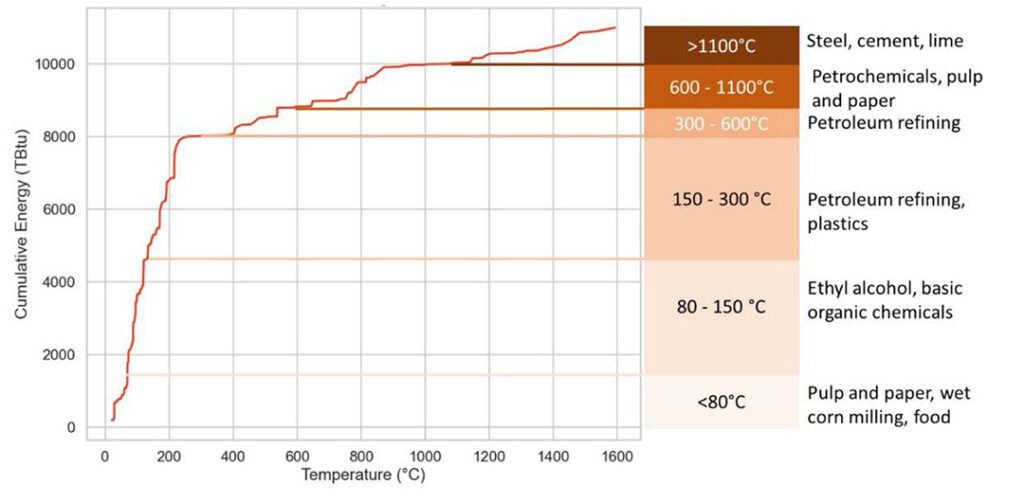
Impact of industrial sectors
The five largest energy consuming industrial sectors in the U.S. are chemicals and petroleum refining, iron and steel, paper and pulp, cement and food and beverage.
A Department of Energy (DOE) study showed that in U.S. the total energy consumed for process heating in these eight industries constitute 95% of energy consumed for thermal processing in all industries.
The challenges and opportunities for process electrification vary between sectors. For example, the energy demands of individual food and beverage or paper and pulp facilities are small compared to the heavy industries, such as petrochemical, steel, and cement, but the number of sites far exceeds the number of heavy industry sites and are distributed more evenly across the nation.

References:
Akar, Sertaҫ, Parthiv Kurup, Matthew Boyd, Elizabeth Wachs, and Colin McMillan. 2023. Renewable Thermal Energy Systems: Modeling Developments and Future Directions (Report 3). Golden, CO: National Renewable Energy Laboratory. NREL/TP-7A40-83021. https://www.nrel.gov/docs/fy23osti/83021.pdf.
McMillan, Colin A., and Mark Ruth. 2019. “Using Facility-Level Emissions Data to Estimate the Technical Potential of Alternative Thermal Sources to Meet Industrial Heat Demand.” Applied Energy 239 (April): 1077–90. https://doi.org/10.1016/j.apenergy.2019.01.077.